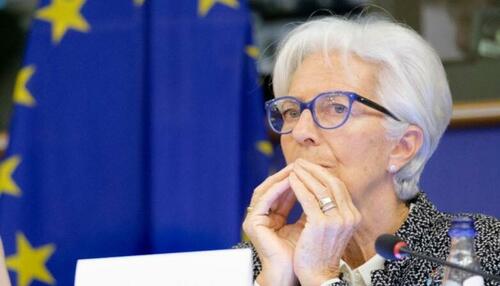
Negative interest rates and quantitative easing have wrecked the economic system. Negative interest rates destroy the profitable portion of a bank’s asset base, and no amount of cost-cutting or efficiency initiatives can compensate for this loss. Furthermore, persistent quantitative easing has transformed the investment side of the balance sheet into a ticking bomb.
Deutsche Bank is the latest headline after Credit Suisse. Nonetheless, everyone was aware that Credit Suisse faced enormous obstacles and a lack of profitability. On the other hand, Deutsche Bank was recovering from years of losses. Since 2019, Deutsche Bank has launched a solid rebalancing plan, with a goal of increasing return on tangible assets to 8%, a massive cost-cutting initiative, and a shift from investment banking to its core lending activities. After years of losses, the core capital ratio grew and profits began to emerge, indicating the apparent success of the plan.
Deutsche Bank followed the recommendations of authorities and the central bank to the letter. No strategy can counteract the erosion of the balance sheet caused by monetary policy and regulation.
Credit Suisse, Deutsche Bank, and Silicon Valley Bank are not the root of the banking issue. These are the symptoms.
The banking industry was not damaged by rate hikes, but by years of negative interest rates and monetary excess.
During a time when negative interest rates were destroying their primary business, European banks did all they could to become modestly profitable and bolster their balance sheets. According to the ECB, at the end of 2022, the aggregate Common Equity Tier 1 (CET1) ratio was 14.74 percent, the aggregate Tier 1 ratio was 16.03 percent, and the aggregate total capital ratio was 18.68 percent.
The economic aberration of negative interest rates has destroyed the bank’s profitable assets. Hence, most assets do not create a profit above the cost of capital for banks. Furthermore, investment risk surged during the period of monetary excess, obscuring any risk analysis.
Central banks constructed the time bomb that is exploding today through the insanity of negative interest rates and perpetual quantitative easing. Even during moments of boom, they made the assets with the lowest risk and volatility, sovereign debt, enormously expensive and volatile by acquiring bonds without control. As described numerous times in this column, this concealed danger but did not eliminate it.
What took place in 2022? Central banks have reported astronomical losses on their portfolios of national bonds. In 2022, the ECB reported losses of 1.6 billion euros that had to be covered by reversing provisions. The Federal Reserve and the Bank of England also suffered tremendous losses.
The financial void caused by the central bank’s accumulation of “safe assets” became the limit for many firms.
These identical unrealized losses in a commercial bank, when combined with negative returns on loans and deposit losses, indicate disaster. Quickly, the bank’s equity evaporates.
How is it possible? Is the issue the absence of regulation?
Regulation is the cause of this void. According to the regulation, taking risks in the public sector does not require capital because there is no risk involved. Negative interest rates are mandated by regulation through the supervisor. The regulation penalizes the increase of the cash ratio. And it is the supervisor who creates the risk in sovereign bonds by purchasing them uncontrollably while printing money.
Currently, the major issue is centered on the star financial instrument of these years. Regulation and oversight prompted banks to issue contingent convertible bonds in excess of $250 billion (AT1, or CoCos). These bonds have a particularly important equity component because if the entity’s highest quality capital falls below 6% – a lower figure than the norm for banks in 2008 – they are promptly converted into shares and the bank is automatically recapitalized. It looks like a terrific idea… Until it causes a big stock market meltdown, as everybody who has purchased a convertible bond is aware.
At the time of writing, the average coupon yield on contingent convertible bonds issued by European banks is 10.46%, while the average capital ratio (tier 1) of the largest European banks is 14.5%, according to Bloomberg. When the capital ratio falls below 6%, convertible bonds would immediately convert into common stock. Consequently, a substantial cushion of money exists before the necessity to convert arises. Right?
We cannot assume that these bonds are without danger. Low-risk bonds do not yield 10.4%. There are CoCos with a 19% yield from German banks and 15.7% yields from French banks. This does not imply that they are inexpensive, but rather that they carry a higher risk.
There is no return without risk, and if a convertible bond offers a 15% return, it is not due to the issuer’s generosity but to the bond’s extremely high risk.
In certain instances, in Europe, the amount of AT1 bonds issued by the firm is comparable to its present market capitalization. The number of AT1 bonds issued represents around half of the banking sector’s overall capitalization.
A convertible bond is only a good financial instrument if investors have perfect faith in the issuer’s balance sheet. When confidence wanes, the bond depresses the stock price, and the stock price, in turn, depresses the bond price, creating a vicious cycle that may have a negative outcome. The majority of credit investors cannot hold the shares if these bonds are converted; therefore, they must sell them or short the equity to mitigate the risk. It is not an issue with the instrument itself, but rather with the complacency of those who believe that having this financial buffer eliminates the need to normalize policy.
Many investors who purchase convertible bonds cannot hold the stock when it converts, so they must either short the security or sell the shares when it converts, which can have a significant impact on the share price. If the amount of convertible bonds issued is comparable to the bank’s market capitalization, it is possible that the conversion will not strengthen the bank’s capital but instead cause it to collapse due to selling pressure, since the value of both the new and old shares is less than the bank’s previous market capitalization. In other words, a convertible bond is a good idea if its conversion into shares does not cause a subsequent decline in the stock market’s value. However, this danger is difficult to assess.
In the case of European banks, it is important to recall that during the era of negative interest rates, they increased their high-quality capital. Today’s banks are better prepared for a shock of this scale, but it would be irresponsible and dishonest to claim that these are unique incidents that do not influence other entities. The balance sheets of the banks have been destroyed by monetary policy and regulation. Thus, the significance of addressing the anomaly of negative interest rates.
To prevent financial crises, regulators must also abolish the penalty for saving and the incentive to amass risk in the public sector.
No entity acquires large risk in its assets. Crises are always caused by the building of positions in assets that are regarded as posing almost no risk.
You wanted negative types and uncontrolled printing, correct? Lending without economic criteria Welcome to the repercussions.
No one can claim we did not issue a warning about this. I stated in 2019 (The Eurozone Banks’ Trillion Timebomb, 18 Nov 2019) that Cocos can be a double-edged sword. On the one hand, they have been one of the most popular mechanisms for rapidly increasing core capital. In recent years, it was an extremely popular vehicle for bolstering capital and diversifying funding sources. In contrast, it is a highly hazardous asset that can have a domino effect on the entity’s equity and other bonds. The notion that a CoCo can convert or default without posing a risk of contagion to the rest of the capital structure or other banks is absurd.
Currently, the issue may appear to be controllable, but if financial repression persists, it will generate a systemic risk in the entire financial system by extending a slowly building but rapidly exploding risk.
Negative interest rates and quantitative easing have wrecked the economic system. Negative interest rates destroy the profitable portion of a bank’s asset base, and no amount of cost-cutting or efficiency initiatives can compensate for this loss. Furthermore, persistent quantitative easing has transformed the investment side of the balance sheet into a ticking bomb.
Deutsche Bank is the latest headline after Credit Suisse. Nonetheless, everyone was aware that Credit Suisse faced enormous obstacles and a lack of profitability. On the other hand, Deutsche Bank was recovering from years of losses. Since 2019, Deutsche Bank has launched a solid rebalancing plan, with a goal of increasing return on tangible assets to 8%, a massive cost-cutting initiative, and a shift from investment banking to its core lending activities. After years of losses, the core capital ratio grew and profits began to emerge, indicating the apparent success of the plan.
Deutsche Bank followed the recommendations of authorities and the central bank to the letter. No strategy can counteract the erosion of the balance sheet caused by monetary policy and regulation.
Credit Suisse, Deutsche Bank, and Silicon Valley Bank are not the root of the banking issue. These are the symptoms.
The banking industry was not damaged by rate hikes, but by years of negative interest rates and monetary excess.
During a time when negative interest rates were destroying their primary business, European banks did all they could to become modestly profitable and bolster their balance sheets. According to the ECB, at the end of 2022, the aggregate Common Equity Tier 1 (CET1) ratio was 14.74 percent, the aggregate Tier 1 ratio was 16.03 percent, and the aggregate total capital ratio was 18.68 percent.
The economic aberration of negative interest rates has destroyed the bank’s profitable assets. Hence, most assets do not create a profit above the cost of capital for banks. Furthermore, investment risk surged during the period of monetary excess, obscuring any risk analysis.
Central banks constructed the time bomb that is exploding today through the insanity of negative interest rates and perpetual quantitative easing. Even during moments of boom, they made the assets with the lowest risk and volatility, sovereign debt, enormously expensive and volatile by acquiring bonds without control. As described numerous times in this column, this concealed danger but did not eliminate it.
What took place in 2022? Central banks have reported astronomical losses on their portfolios of national bonds. In 2022, the ECB reported losses of 1.6 billion euros that had to be covered by reversing provisions. The Federal Reserve and the Bank of England also suffered tremendous losses.
The financial void caused by the central bank’s accumulation of “safe assets” became the limit for many firms.
These identical unrealized losses in a commercial bank, when combined with negative returns on loans and deposit losses, indicate disaster. Quickly, the bank’s equity evaporates.
How is it possible? Is the issue the absence of regulation?
Regulation is the cause of this void. According to the regulation, taking risks in the public sector does not require capital because there is no risk involved. Negative interest rates are mandated by regulation through the supervisor. The regulation penalizes the increase of the cash ratio. And it is the supervisor who creates the risk in sovereign bonds by purchasing them uncontrollably while printing money.
Currently, the major issue is centered on the star financial instrument of these years. Regulation and oversight prompted banks to issue contingent convertible bonds in excess of $250 billion (AT1, or CoCos). These bonds have a particularly important equity component because if the entity’s highest quality capital falls below 6% – a lower figure than the norm for banks in 2008 – they are promptly converted into shares and the bank is automatically recapitalized. It looks like a terrific idea… Until it causes a big stock market meltdown, as everybody who has purchased a convertible bond is aware.
At the time of writing, the average coupon yield on contingent convertible bonds issued by European banks is 10.46%, while the average capital ratio (tier 1) of the largest European banks is 14.5%, according to Bloomberg. When the capital ratio falls below 6%, convertible bonds would immediately convert into common stock. Consequently, a substantial cushion of money exists before the necessity to convert arises. Right?
We cannot assume that these bonds are without danger. Low-risk bonds do not yield 10.4%. There are CoCos with a 19% yield from German banks and 15.7% yields from French banks. This does not imply that they are inexpensive, but rather that they carry a higher risk.
There is no return without risk, and if a convertible bond offers a 15% return, it is not due to the issuer’s generosity but to the bond’s extremely high risk.
In certain instances, in Europe, the amount of AT1 bonds issued by the firm is comparable to its present market capitalization. The number of AT1 bonds issued represents around half of the banking sector’s overall capitalization.
A convertible bond is only a good financial instrument if investors have perfect faith in the issuer’s balance sheet. When confidence wanes, the bond depresses the stock price, and the stock price, in turn, depresses the bond price, creating a vicious cycle that may have a negative outcome. The majority of credit investors cannot hold the shares if these bonds are converted; therefore, they must sell them or short the equity to mitigate the risk. It is not an issue with the instrument itself, but rather with the complacency of those who believe that having this financial buffer eliminates the need to normalize policy.
Many investors who purchase convertible bonds cannot hold the stock when it converts, so they must either short the security or sell the shares when it converts, which can have a significant impact on the share price. If the amount of convertible bonds issued is comparable to the bank’s market capitalization, it is possible that the conversion will not strengthen the bank’s capital but instead cause it to collapse due to selling pressure, since the value of both the new and old shares is less than the bank’s previous market capitalization. In other words, a convertible bond is a good idea if its conversion into shares does not cause a subsequent decline in the stock market’s value. However, this danger is difficult to assess.
In the case of European banks, it is important to recall that during the era of negative interest rates, they increased their high-quality capital. Today’s banks are better prepared for a shock of this scale, but it would be irresponsible and dishonest to claim that these are unique incidents that do not influence other entities. The balance sheets of the banks have been destroyed by monetary policy and regulation. Thus, the significance of addressing the anomaly of negative interest rates.
To prevent financial crises, regulators must also abolish the penalty for saving and the incentive to amass risk in the public sector.
No entity acquires large risk in its assets. Crises are always caused by the building of positions in assets that are regarded as posing almost no risk.
You wanted negative types and uncontrolled printing, correct? Lending without economic criteria? Welcome to the repercussions.
No one can claim we did not issue a warning about this. I stated in 2019 (The Eurozone Banks’ Trillion Timebomb, 18 Nov 2019) that Cocos can be a double-edged sword. On the one hand, they have been one of the most popular mechanisms for rapidly increasing core capital. In recent years, it was an extremely popular vehicle for bolstering capital and diversifying funding sources. In contrast, it is a highly hazardous asset that can have a domino effect on the entity’s equity and other bonds. The notion that a CoCo can convert or default without posing a risk of contagion to the rest of the capital structure or other banks is absurd.
Currently, the issue may appear to be controllable, but if financial repression persists, it will generate a systemic risk in the entire financial system by extending a slowly building but rapidly exploding risk.
Loading…





